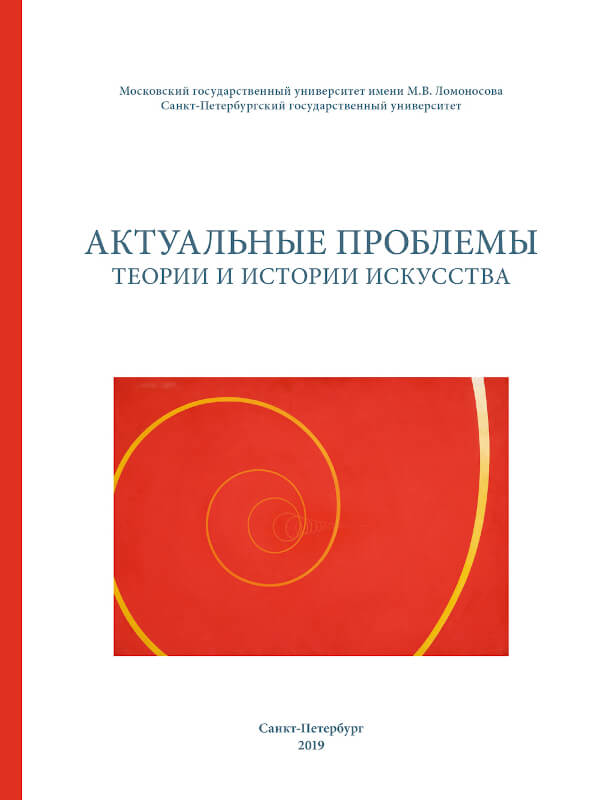Painted Church Facades in Byzantine and Post-Byzantine Art and Their Aesthetics
DOI:
https://doi.org/10.18688/aa199-2-28Keywords:
Byzantine architecture, church facades, exterior painted decoration, Balkans, Constantinople, Late Byzantine art, Post-Byzantine artAbstract
Although painted church facades represent long tradition, attested in different regions of the Byzantine world, they have not been recognized as a widespread phenomenon. Scholars, like Slobodan Ćurčić, stressed the necessity to reexamine Byzantine architectural aesthetics in the light of such evidence. Nevertheless, exterior paintings are not yet treated as an integral part of the decorative fabric of buildings. The main problem lies certainly in the scarcity and fragility of the archaeological data that needs to be recordedand collected more systematically.
The aim of this article is to draw attention to this issue, most particularly for the Late and Post-Byzantineperiods. It discusses several relevant examples of painted facades, the choice of depicted motives (both ornamental and figurative) and their display on particular parts of the building with intention to question the sources and meanings of that artistic practice. Spurred by the growing interest in non-textual aspects of painted inscriptions, this article reconsiders the place of painted decorations in the adornment of exterior walls and the impact such aesthetic had on the appearance of Byzantine churches and their beholders.
References
Aküyrek E. A Recently Discovered Thirteenth Century Church at Myra. Proceedings of the 17th Symposium on Mediterranean Archaeology: SOMA 2013, Moscow, 25–27 April 2013. Oxford, Archaeopress Publ., 2015, pp. 14–23.
Aküyrek E. (ed.). Alakent Church: A Byzantine Monument at Myra (12th–13th Centuries). Istanbul, Koç University Stavros Niarchos Center for Late Antique and Byzantine Studies Publ., 2019. 269 p.
Bolman E. Painted Skins: The Illusions and Realities of Architectural Polychromy, Sinai and Egypt. Approaching the Holy Mountain: Art and Liturgy at St. Catherine’s Monastery in the Sinai. Turnhout, Brepols Publ., 2010, pp. 119–140.
Čanak-Medić M. Contribution à l’étude de l’origine de la polychromie sur les façades des édifices byzantins. Actes du XVe congrès international d’études byzantines, Athènes, 1976, vol. 2. Athènes, Association Internationale des Etudes Byzantines Publ., 1981, pp. 107–120 (in French).
Ćirić J. The Art of Exterior Wall ‘Decoration’ in Late Byzantine Architecture. Mal’tseva S. V.; Staniukovich- Denisova E. Iu. (eds.). Actual Problems of Theory and History of Art: Collection of Articles, vol. 1. St. Petersburg, NP-Print Publ., 2011, pp. 69–76.
Clavijo de R. G. Embajada a Tamorlán. Madrid, Editorial Castalia Publ., 1999. 432 p. (in Spanish).
Ćurčić S. Middle Byzantine Architecture on Cyprus: Provincial or Regional? Nicosia, Bank of Cyprus Cultural Foundation Publ., 2000. 38 p.
Ćurčić S. Religious Settings of the Late Byzantine Sphere. Byzantium Faith and Power (1261–1557). New York, Metropolitan Museum of Art Publ., 2004, pp. 65–77.
Ćurčić S. Architecture in the Balkans from Diocletian to Süleyman the Magnificent. New Haven, Yale University Press Publ., 2010. 913 p.
Đurić V. J.; Ćirković S.; Korać V. Pećka Patrijaršija. Belgrade, Jugoslovenska revija Publ., 1990, pp. 101–107 (in Serbian).
Eastmond A. An Intentional Error? Imperial Art and “Mis”-Interpretations under Andronikos I Komnenos. Art Bulletin, 1994, no. 76, pp. 502–510.
Gerstel E. J. S.; Lauffenburger J. A. (eds.). A Lost Art Rediscovered: The Architectural Cermics of Byzantium. Baltimore, Walters Art Museum; University Park, Pennsylvania State University Press Publ., 2001. 318 p.
Hadermann-Misguich L. Une longue tradition byzantine. La décoration extérieure des églises. Zograf, 1976, no. 7, pp. 5–10 (in French).
Isar N. Spatial Tropes of Iconicity: When Architecture Dissolves into Transparency. Proceedings of 23rd International Congress of Byzantine Studies: Round Tables, Belgrade, 22–27 August 2016. Belgrade, The Serbian National Committee of AIEB Publ., 2016. 1415 p.
Isar N. Le mur aboli: logique du dévoilement. Leiden, Alexandross Press Academic Publ., 2019. 220 p. (in French).
Isar N. Le mur aboli: le sacrement de la Parole dans les absides des églises moldaves. Byzantinoslavica, 1999, no. 60, pp. 611–632 (in French).
Kalopissi-Verti S. The Proskynetaria of the Templon and Narthex: Form, Imagery, Spatial Connections and Reception. Threshold of the Sacred: Architectural, Art Historical, Liturgical, and Theological Perspectives on Religious Screens, East and West. Washington DC, Dumbarton Oaks Research Library and Collection Publ., 2006, pp. 107–132.
Mango C. Byzantine Architecture. Milan, Electra Editrice Publ.; New York, Rizzoli Publ., 1985. 215 p.
Mango C. The Art of the Byzantine Empire, 312–1453: Sources and Documents. Toronto, Toronto University Press Publ., 1986. 272 p.
Millet G.; Talbot Rice D. Byzantine Painting at Trebizond. London, G. Allen & Unwin Publ., 1936. 182 p.
Orlova M. A. Naruzhnye rospisi srednevekovykh pamiatnikov arkhitektury. Vizantiia. Balkany. Drevniaia Rus’ (External Paintings of Mediaeval Buildings. Byzantium, Balkans, Old Rus). Moscow, Nauka Publ., 1990. 240 p. (in Russian).
Ousterhout R. Some Notes on the Construction of Christos Ho Pantepoptes (Eski Imaret Camii) in Istanbul. Deltion tis Christianikis Archaiologikis Etaireias, 1991–1992, vol. 16, pp. 47–56.
Ousterhout R. Master Builders of Byzantium. Princeton, Princeton University Press Publ., 1999. 320 p.
Siomkos N. Fresques sur la façade orientale des églises à Kastoria. Une pratique byzantine inconnue. Afieroma ston akadimaiko Panagioti L. Vokotopoulo. Athens, Kapon Publ., 2015, pp. 465–471 (in French).
Subotić G.; Miljković B.; Špadijer I.; Toth I. Natpisi istorijske sadržine u zidnom slikarstvu. Tom Prvi. XII–XIII vek (Inscriptions with Historical Contents in Monumental Painting, vol. 1. 12th–13th Century). Belgrade, Srpska Akademija Nauke i Umetnosti Publ., 2015. 142 p. (in Serbian).
Terry A.; Maguire H. Dynamic Splendor: The Wall Mosaics in the Cathedral of Eufrasius at Poreč. University Park, Pennsylvania State University Press Publ., 2007. 416 p.
Todić B. Srpsko slikarstvo u doba kralja Milutina (Serbian Painting in the Time of King Milutin). Belgrade, Draganić Publ., 1998. 395 p. (in Serbian).
Trkulja J. Aesthetics and Symbolism of Late Byzantine Church Facades, 1204–1453, Ph. D. Diss. Princeton University, 2004.
Trkulja J. Divine Revelation Performed: Symbolical and Spatial Aspects in the Decoration of Byzantine Churches. Spatial Icons: Performativity in Byzantium and Medieval Russia. Moscow, Indrik Publ., 2011, pp. 213–246.


